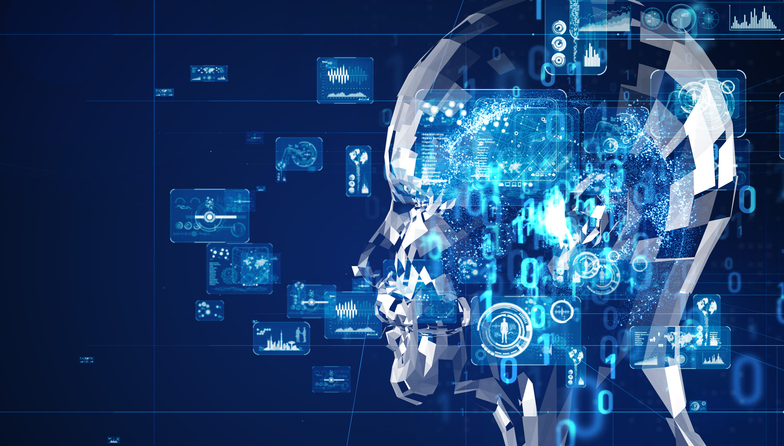
© metamorworks/iStock/Getty Images Plus
In case you have any doubts that artificial intelligence will fundamentally alter the way we go about our business in ways large and small, I recommend the book “Competing in the Age of AI” by Marco Iansiti and Karim Lakhani (https://hbr.org/2020/01/competing-in-the-age-of-ai). The two Harvard Business School professors have taken a systemic deep-dive across many industries and come to a conclusion worth pondering.
“No field of human endeavor will remain independent of artificial intelligence,” they write. “In discipline after discipline, and industry after industry, digital networks and AI are becoming pervasive, defining a new age for business and for all of us.”
The reach of algorithms and increasingly smarter networks stretches from the recommendations you receive on your favorite streaming platforms, the fulfillment and dispatch planning for grocery and e-commerce deliveries to the way companies of any size architect and run their business processes.
Accounts Payable automation is no exception. In fact, AP has been one of the back-office functions that has for years been moving into the AI and machine learning space, picking up considerable speed in the past few years. If your system runs in the cloud, you can benefit from the network effect of algorithms being trained on hundreds of thousands of invoices, learning from every data point and every line on a form. Software over time gets better at recognizing patterns, triggering actions and only asking humans to step in when it spots an exception that needs to be addressed.
Overall, AI is already making it easier and more frictionless how we pay suppliers and employees and forge closer relationships with vendors and partners. And we’re just at the beginning of an amazon transformation.
The journey to a new business era rich in AI tools started with something much simpler, called robotic process automation (RPA). It is about putting software bots in charge of well defined tasks such as responding to an incoming email or extracting details from a structured file such as an invoice. RPA, in short, deals well and efficiently with things that humans should not waste time on when they can instead focus on more value-added tasks. Yet RPA software can take you only so far as it mimics human actions and cannot intelligently understand and learn from what it does.

That’s where machine learning comes in as a step change, even for a small or mid-sized business. If an organization wants to become what Iansini and Lakhani call an “AI factory,” it’s necessary to automate the feedback loop around data. How an organization gathers data, how it analyzes it to optimize its processes and to make decisions, and finally how it automates the learning process around that data.
Now, not everything that is sold as having AI and machine-learning capabilities is truly transformational yet. The AP function again is a good case in point. When companies outsource their Accounts Payable system, they often don’t realize that behind the scenes, scores of humans still review and fix the scans of their invoices, leading to delays of hours or days.
A true machine-learning solution, by contrast, can extract data as it comes in and move it along to the next point in the workflow in almost real time. When a crisis forces the shut-down of offices, it provides another compelling reason to build an “AI factory” that hums along without humans.
Machine-learning is not only faster and more accurate, but it gets better over time. We at Yooz have the advantage of using ten years of data as a training set to make our tools see patterns in invoices and other documents, even distinguishing particular templates from different suppliers without any manual set-up required. Thanks to this constant feedback loop, some organizations can achieve accuracy rates north of 95 percent through automation.
And why stop at invoices? The same intelligent system could be used to automatically recognize and route resumes to the HR department, contracts to the legal team or policies to the insurance experts. Why not also tap into other databases to have algorithms automatically check if the person listed on an invoice really works for a company or if the bank information is accurate? Humans will only step in to take a closer look at exceptions and make sure the service you deliver is constantly optimized.
So what’s next on the horizon to truly automate the AP process? I think AI is where the cloud was ten years ago. Every customer I speak to has heard of it, more and more companies dip a toe or two into the water, and the tools are constantly improving. It is crucial, though, to get started now and use the software that’s available today.
AI is no magic bullet that will one day bring about the perfect, automated workflow, but rather a technology foundation that your back office can already tap into. Any SME can afford to access impressive compute power in the cloud to reap the benefits of this virtuous cycle of data. Consider, for instance, how far we’ve come when you can perform an instant search for any keyword in any invoice you’ve ever processed--much like you use a search engine.
Harnessing that power for an AP team means cycle times cut down to hours, 80% cost reduction, fewer late fees, more discounts and lower fraud and error rates. In that sense, the “AI factory” is not a lofty goal but an organization’s best insurance policy to stay competitive.
Laurent Charpentier is COO and Chief Innovation Officer at Yooz Inc. To learn more about how AP automation can increase efficiencies and drive profits, visit www.getyooz.com or call 832.384.YOOZ (9669).